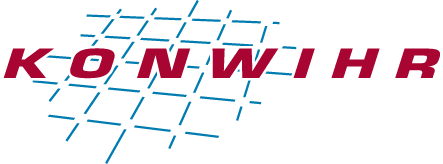Applicant
Prof. Dr. habil. Gabriele Chiogna
Professor for Applied Geology and Modeling of Environmental Systems
Friedrich-Alexander-Universität Erlangen-Nürnberg
Project Overview
This research proposal is a follow-up project to the KONWIHR Project Optimization of LuKARS, granted for the period June 2024 – August 2024. LuKARS (LuKARS, Land use change modeling in KARSt systems) is a semi-distributed lumped parameter model consisting of a set of ODEs that are solved using an explicit Euler temporal scheme. The model simulates the dominant flow processes in a karst system, i.e., quick flow through the conduit, infiltration through the matrix, transfer between matrix and conduit, and baseflow, by lumping the considered recharge area into buckets which represent the dominant hydrotopes. Each hydrotope is characterized by a different hydrological response and contributes to the spring discharge with individual quick flow and infiltration. LuKARS was originally
implemented on R (Bittner et al., 2018) and later further developed in Python using the NumPy and Pandas libraries (Richieri et al., 2024; Sivelle et al., 2022). The goals of the KONWIHR Project Optimization of LuKARS were to optimize the LuKARS code, allowing for a faster computation and a flexible model structure. We followed the suggestion of the reviewers, and we focused our attention in the first stage of the project on the performance analysis and initial optimization of the software and thoroughly discussed it with NHR@FAU. We optimized the model runtime by using the Numba library and by reducing unnecessary code complexity, related for instance to the presence of temporary arrays.
The improved performance of the code implementation was tested using the %timeit function and comparing the runtime before and after the optimization considering the same model structure. The runtime showed a reduction of three orders of magnitude from 1.14 seconds to 7 milliseconds. Additionally, to speed up the calibration of the model parameters and sensitivity analysis, we used a parallel approach to run different subsets of Monte Carlo model realizations simultaneously in separate temporal subdirectories on HPC clusters at NHR@FAU. Finally, to allow for a flexible model structure, we modified the code such that an arbitrary number of hydrotopes (corresponding to an arbitrary number of soils and land uses in a catchment area) and activated flow components can be defined without the need to further modify the code. This allows us to investigate for the first time not only parametric uncertainty, but also structural model
uncertainty. At the end of the first phase of the project, we have been able to significantly improve the part of the code focusing on spring discharge simulations, parameter estimation and uncertainty quantification and we developed LuKARS 2.0.
References
Bittner, D., Narany, T. S., Kohl, B., Disse, M., & Chiogna, G. (2018). Modeling the hydrological impact
of land use change in a dolomite-dominated karst system. Journal of Hydrology, 567, 267-279.
Parkhurst, D. L., & Appelo, C. A. J. (2013). Description of input and examples for PHREEQC version 3-
A computer program for speciation, batch-reaction, one-dimensional transport, and inverse geochemical
calculations. U.S. Geological Survey Techniques and Methods, book 6, chap. A43, 497 p.
Richieri, B., Bittner, D., Sivelle, V., Hartmann, A., Labat, D., and Chiogna, G. (2024). On the value of
hydrochemical data for the interpretation of flow and transport processes in the Baget karst system,
France. Hydrogeology Journal.
Sivelle, V., Jourde, H., Bittner, D., Richieri, B., Labat, D., Hartmann, A., and Chiogna, G. (2022).
Considering land cover and land use (LCLU) in lumped parameter modeling in forest dominated karst
catchments, Journal of Hydrology, 612(C), 128264.

